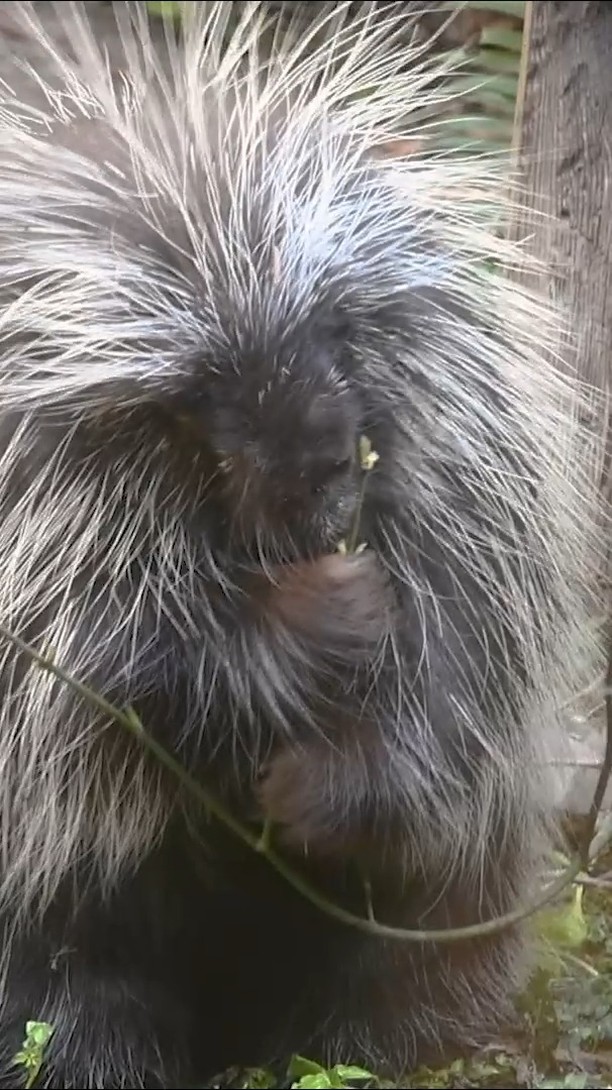- Thistle the porcupine’s interaction with flowering currant as seasonal enrichment.
- The significance of enrichment activities in zoo animal welfare.
- Botanical importance of flowering currant and its role in wildlife habitats.
- Thistle’s behavioral and physical characteristics at 9 years old.
- The impact of zoo management practices on wildlife conservation.
Thistle the porcupine, a resident of the zoo, is experiencing the joys of springtime through his enrichment activity with flowering currant. At 9 years old, Thistle’s curiosity about every petal and branch is not only entertaining but also crucial for his well-being. This interaction highlights the importance of enrichment in zoo management and animal welfare.
Enrichment activities are essential for maintaining the mental and physical health of animals in captivity. They simulate natural behaviors, stimulate the senses, and promote physical activity. Enrichment can come in many forms, including environmental changes, sensory stimuli, or manipulative challenges. For Thistle, the introduction of flowering currant represents a dynamic element in his habitat that encourages exploration and playful behavior. Such activities are tailored by zookeepers and researchers to address the specific needs of each animal, taking into account their natural history, ecological requirements, and personality.
The flowering currant (Ribes sanguineum), which serves as Thistle’s springtime toy, is more than just a plant. It’s an important botanical species native to western North America. Known for its vibrant flowers and rich aroma, it plays a key role in its native ecosystems. Flowering currants provide nectar for early pollinators like bees and hummingbirds, and their berries offer food for various bird species. This plant’s inclusion in Thistle’s enclosure not only simulates his natural environment but also introduces an ecological aspect into his daily life, bridging the gap between the natural world and captivity.
At nine years old, Thistle exhibits behavior typical of a well-cared-for porcupine. He is curious and engaged, showing the vigor often associated with younger animals. Porcupines are solitary by nature and are most active during the twilight hours. Characterized by their sharp quills, these herbivorous creatures have excellent climbing abilities, which they use in search of food like leaves, fruits, and in this case, flowering currant branches. Understanding Thistle’s behavior and physical characteristics allows zookeepers to create enrichment activities tailored to his instincts and preferences, which is crucial for his quality of life.
Zoo management plays a critical role in wildlife conservation, often extending beyond the exhibits. Modern zoos strive to support conservation efforts by participating in breeding programs, research, and education initiatives. These institutions provide a sanctuary for endangered species and an opportunity to educate the public about conservation issues. By simulating natural habitats and behaviors through enrichment programs, zoos like Thistle’s home contribute significantly to the preservation of biodiversity.
Engaging with Thistle’s enrichment activity emphasizes the interconnectedness of animal welfare, botanical knowledge, and conservation efforts. This approach underscores the continuous commitment required to support and sustain wildlife both in captivity and in the wild. Thistle’s story is a reminder of the intricate relationship between animals and their environments, and the ongoing efforts needed to protect them.
*****
Source Description
🌸 Thistle the porcupine is loving his springtime enrichment, flowering currant! At 9 years old, he still gets curious about every petal and branch. 🌿

